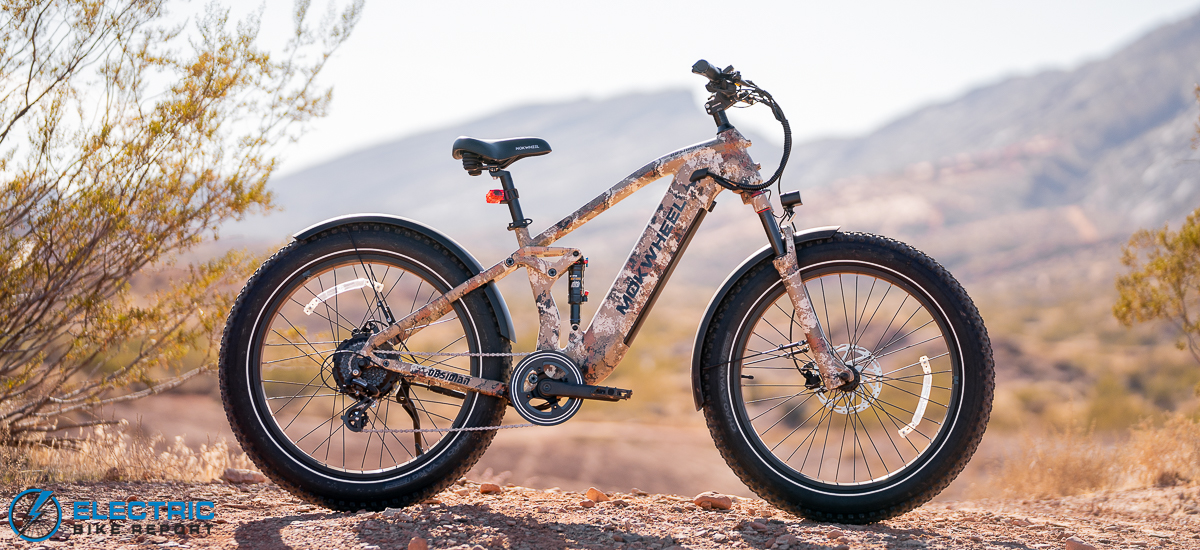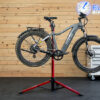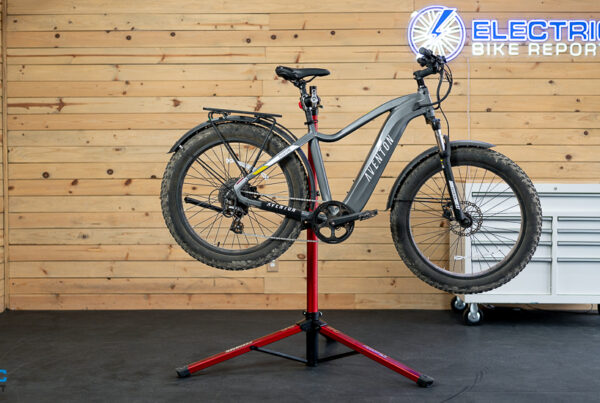Mokwheel advertises a range of 60-80 miles with a single charge of the Obsidian’s 48V, 941 watt-hour (Wh) battery. To evaluate this claim, we performed two Range Tests using the bike’s maximum and minimum levels of pedal assistance, where we rode the bike until its battery expired.
Using Strava to collect ride data from our tests, we measured 33.5 and 60.4 miles in PAS 5 and PAS 1, respectively. Our results clearly differed significantly from the brand’s advertisements, but they exceeded our expectations based on the bike’s specs – and the Obsidian did well in comparison to similar e-bikes we’ve tested.
Based on the bike’s 1,000W motor and 941 Wh battery, we expected our PAS 5 test to result in roughly 26 miles of range and a duration of 57 minutes. Our real-world results suggest that the Obsidian’s motor is relatively efficient, though there were likely two factors that contributed to this efficiency.
First, with a torque sensor, the motor is able to mete power in proportion to the rider’s effort; it only puts out its full 1,000W when the rider is applying significant effort. Second, during our PAS 5 test, we noticed that when pedaling with a relaxed pace, the motor quickly “caught up” to the level of power needed to sustain our speed and then turned off until we slowed by about 0.5 mph. This granted a somewhat inconsistent feel to the motor output and the ride itself, though it had the benefit of reducing the draw on battery power.
Compared to similar e-bikes we’ve tested, the Obsidian’s Range Test results appear to be relatively average, but in truth, are likely above average for an e-bike with a rear-hub motor. Our pool of similar e-bikes is relatively small, as there simply aren’t many e-bikes out there with 1,000W rear-hub motors and torque sensors. As such, we have included similar e-bikes with 1,000W mid-drive motors (which leverage the rider’s effort) and 750W rear-hub motors (which have lower power requirements).
While its battery capacity would be enormous for an e-bike with a less-powerful motor, we’d prefer to see the Wh rating of the Obsidian’s battery (currently 941 Wh) meet the nominal wattage of its motor (1,000W) at a 1-to-1 ratio. The bike performed well given its specs, but a larger-capacity battery would help it to achieve the advertised range from Mokwheel.
As it is, however, the bike proved that it can deliver an impressive amount of range from a single charge. Riding in highly demanding and rough environments will burn through power faster than when riding on smooth, flat ground, but regardless, riders should expect to ride for a significant amount of time before needing to recharge.
.
.
.
#Mokwheel #Obsidian #Review #Electric #Bike #Report
Source link









